The Auction Hammer: Three Military W.W.W. watches from IWC and Record
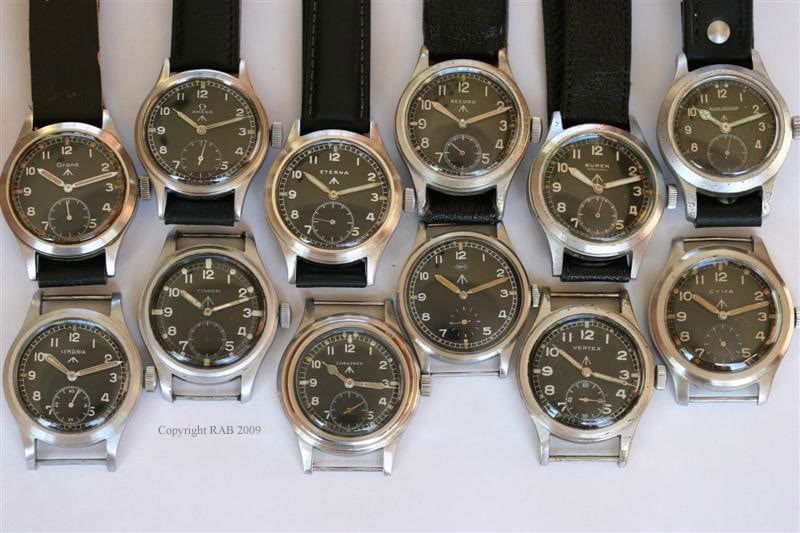
Next week Bonhams is going to put three military timepieces up for auction: two from International Watch Company (IWC) and one from a company with the name Record (see the catalog here). This trio belongs to a distinctive fellowship of military watches, created for the British Military under the auspices of the MoD, known to collectors as the Dirty Dozen (Buren, Cyma, Eterna, Grana, Jaeger LeCoultre, Lemania, Longines, IWC, Omega, Record, Timor and Vertex). We at Monochrome are quite intrigued by these fascinating timepieces, so what follows is an article regarding the W.W.W (Watch, Wrist, Waterproof) watches in general and the trio that will be on auction on May 20th, by Bonhams in London.
Why people love & collect Military/Issued Timepieces?
The drive to collect military timepieces are rooted deep within the psyche of the watch collector. As with most things, when it comes to collecting, there are some well-defined and objective reasons, and in parallel some intangible and highly subjective ones. In most cases, buying or collecting military watches involves sentiment. Some buy pieces that a member of their family had during his time in the service; others are fascinated by the military and history in general, or by a specific branch (I, for example love aviation chronographs, and this is driven by my love for the Air Force.) In addition to that, there are collectors who just love the no-frills design and construction of these timepieces -in other words, they are motivated by the aesthetically pure, form follows function raison d’ etre.
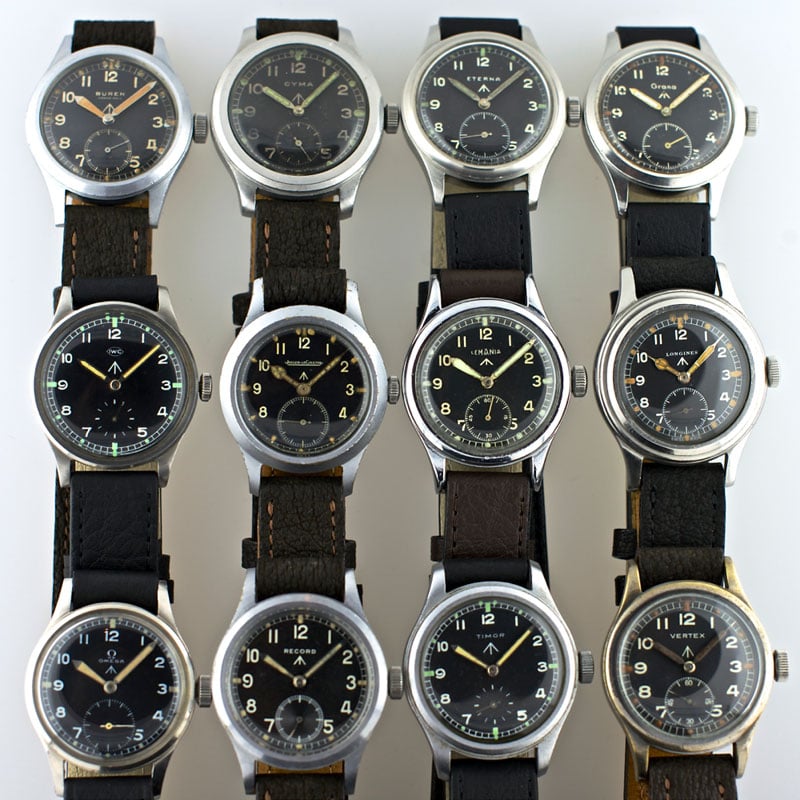
However, there are some other fairly objective and practical reasons for collecting this type of watch. Firstly, they weren’t originally available to the general public, and this makes them a very exclusive choice. Military watches can always become great conversation pieces. Secondly, this exclusivity makes them quite rare and we all know that rarity increases the investment factor for some people.
Collecting military watches is no easy endeavor. Let me stress that military watches are the objects of perhaps the most demanding variety of watch collecting one might undertake. Since these watches were used in active duty, most of the time they are found in poor condition. Furthermore, military records and papers are often difficult to track down; plus, sometimes the watches’ parts (dials, hands, etc) might have been replaced by the military watchmakers (let’s not forget that the watch was a tool; functionality, and not originality, was of the utmost importance). Last but not least, as tools, these watches were subject to constant changes in accordance with continually-updated specifications set by the military’s logistic bureau within each arm or country.
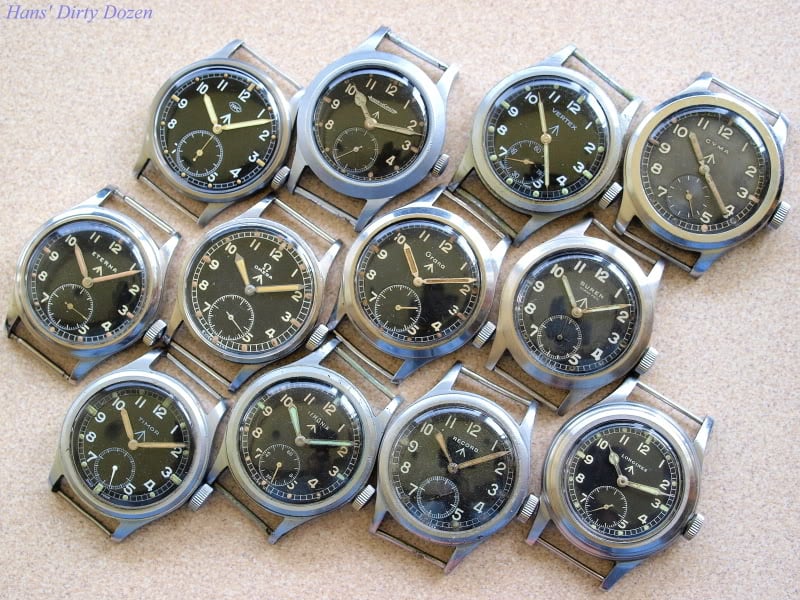
Today, this has a direct impact on the collecting of military timepieces since in some cases there are examples with different hands, dials, crowns etc. Which is the original? What combination is period-correct? These distinctions and anomalies constitute a nightmare for someone who is interested in starting a collection; a lot of effort and research is needed and sometimes you are sailing in uncharted waters.
The W.W.W (Watch, Wrist, Waterproof) watch
WWW’s were the first watches specially designed for general British army service. The characteristic features that were set by the British MoD were:
- Black dial with Arabic numerals, sub seconds at 6 o’clock and railroad style minutes
- Luminous hour and minute hands plus luminous hour markers
- Movements with 15 jewels, 11.75 to 13 ligne in diameter
- Shatterproof Perspex crystal
- Waterproof to the era standards
- Precision movements that had to be regulated to chronometer criteria in a variety of conditions
- Rugged case, capable of diminishing shocks
- Water resistant crown of good size
As we already mentioned before, the watches came from twelve Swiss manufacturers. The British MoD clearly stipulated that they were explicitly meant for ‘General Service.’ This did not mean that each soldier would be eligible for having one issued to him; it was and certainly remains over-the-top to provide a watch regulated to chronometer standards for every soldier. With the term ‘General Service,’ the British meant that these watches would be issued to special units and tasks respectively such as artillery members, staff members, engineers and personnel of the Communications corps.
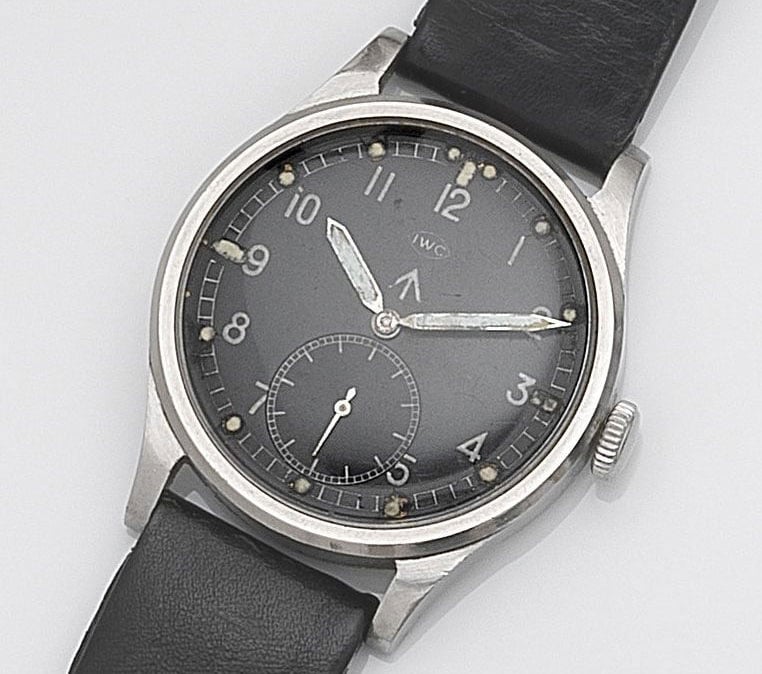
The watches had special markings either engraved or milled in various areas. These markings were there for three sole purposes only:
- To mark each specific watch as a piece of government property
- To create uniform characterization of the watch type
- To establish standardized identification of each individual watch by means of serial numbers
The W.W.W’s also had engraved in three places with the Broad Arrow or Pheon (which denotes property of the British Crown.) They also decrypted on their case backs the descriptive code W.W.W which was composed of three words, the first of which was the most important in the sequence in describing the object: Watch. Two serial numbers could be found as well, one being the civil serial number of the manufacturer and the second a military one which started with a capital letter; In the case of the watches we will review here in some detail, the IWC’s models used the letter M and the Record’s the letter L.
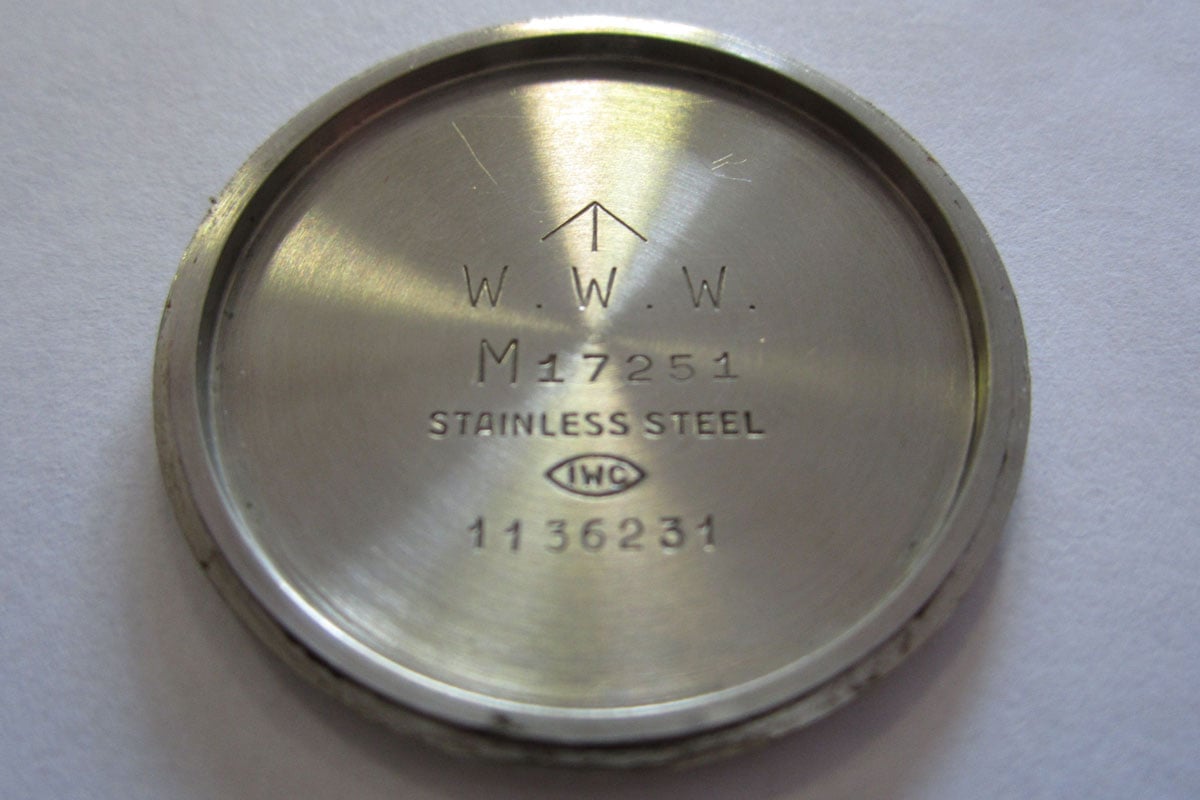
About 150,000 W.W.W’s were delivered to the British military by all 12 manufacturers delivered from May 1945 until December 1945. For the specimens that we will examine, the count came to some 6,000 IWC’s and approximately 25,000 Records. The watches were repaired and maintained by R.E.M.E (Royal Electrical & Mechanical Engineers.) The task of this organization was to carry out complete maintenance, repair and regulation of the supplies of the British Army, and for that reason, they employed watchmakers and instrument makers.
IWC & Record W.W.W’s from Bonhams
The IWC W.W.W’s are perhaps the most prominent of the dirty dozen watches. Unlike the famous Mk11’s, these watches were produced for the Army and not for the R.A.F; many refer to them as Mk X’s. They were 35mm without the crown and had 18mm lugs. They were equipped with the great 83 calibre.
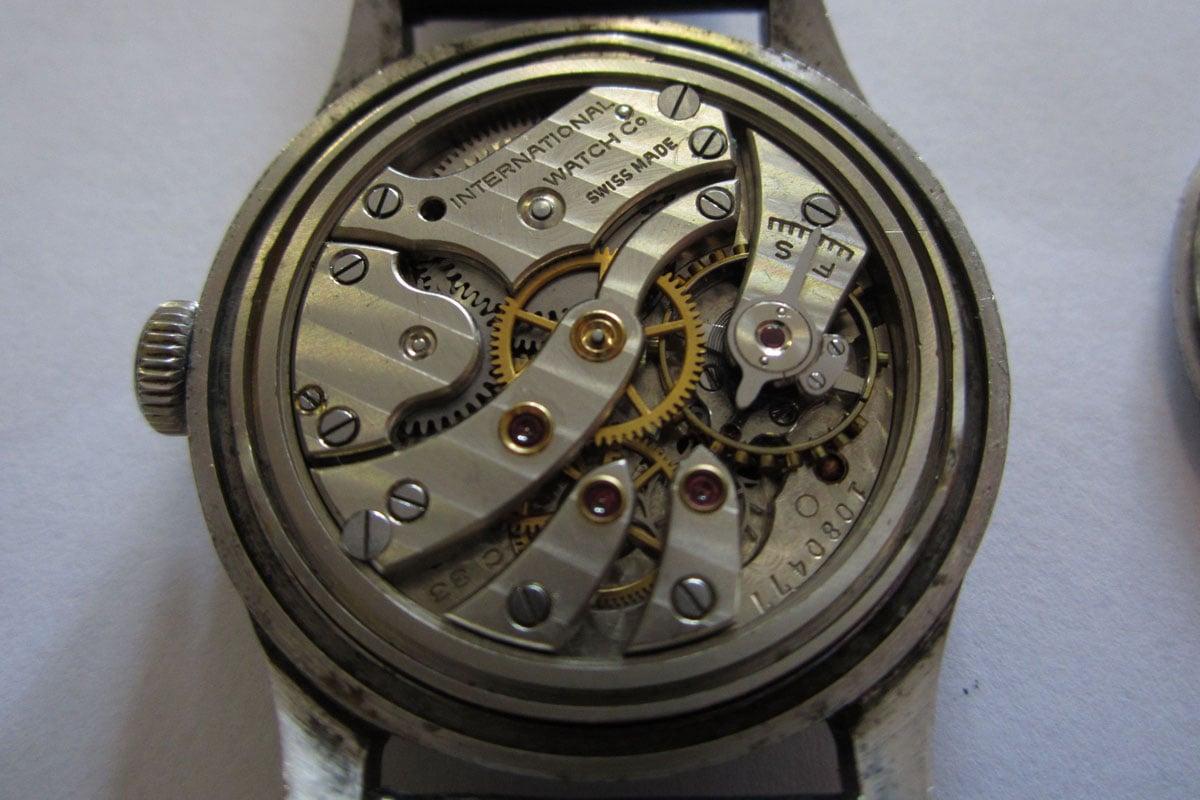
IWC’s manual winding Calibre 83 was produced from 1935 until 1947, and its layout closely resembled the IWC pocket watch calibres of the same era, Cal.95 and Cal.98. One of the major alterations that was made to it during its life was the addition of Incabloc shock resistance once it had been redesigned for use in a specific number of the Mark X military watches (around 10,800 out of the total of 68,400.) It was a 12 lignes (26.5mm) movement with either 15 or 16 jewels, had a bimetallic screw balance and a Breguet hairspring, and ran at 18,000 vph. The Cal.83 in the W.W.W’s was finely tuned and delivered excellent results while being at the same time extremely reliable and rugged.
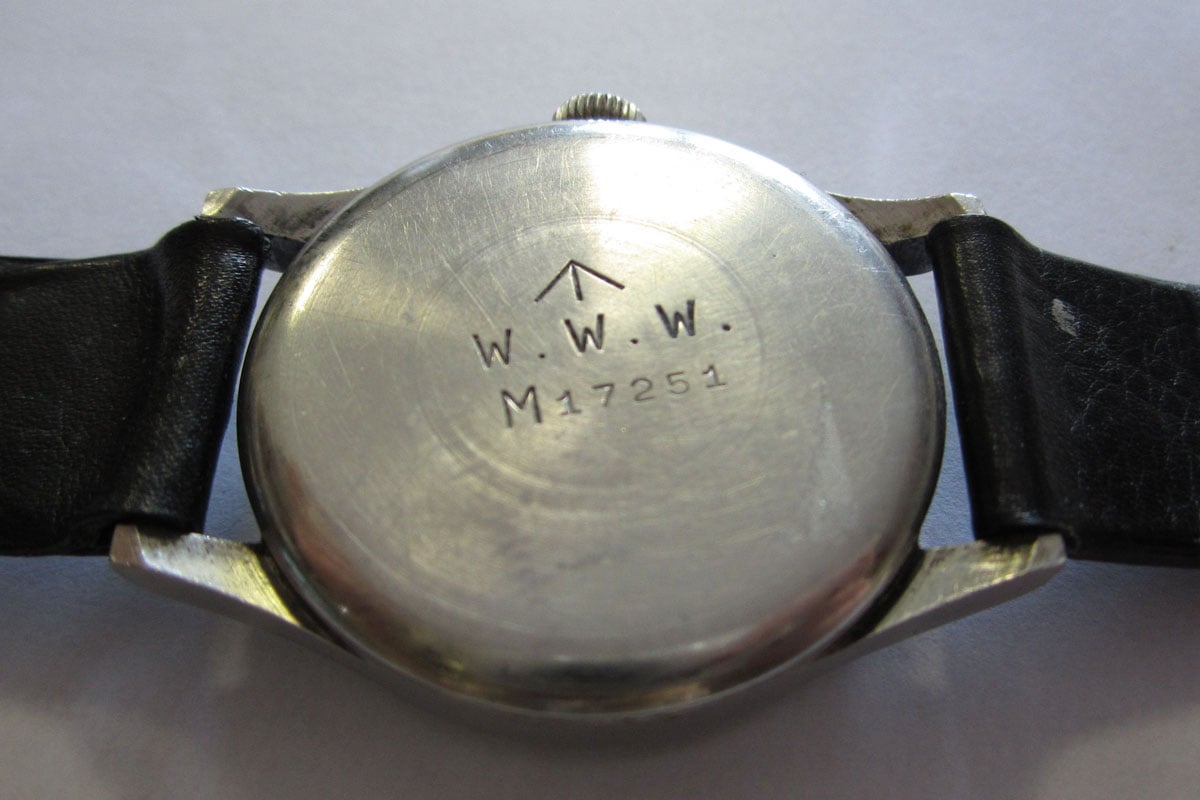
One peculiarity of the IWC MkX was that it was the only W.W.W that had a snap-on back; all other companies used a screwed case back design. As a matter of course, IWC used a lead seal between the case and the case back to prevent water ingress. Both of the watches offered by from Bonhams in the upcoming auction, have original dials while the serial numbers start with the letter M, positively indicating that the watch has been made by IWC.
Here also we must note that at that time, the British Military used Radium-226 for the luminescence of the watches. This is a highly radioactive material. A well-known issue with these watches was the poor construction and, sometimes, the installment of fixed, soldered pin bars. Many examples have at least some soldering done around the pin bar holes.
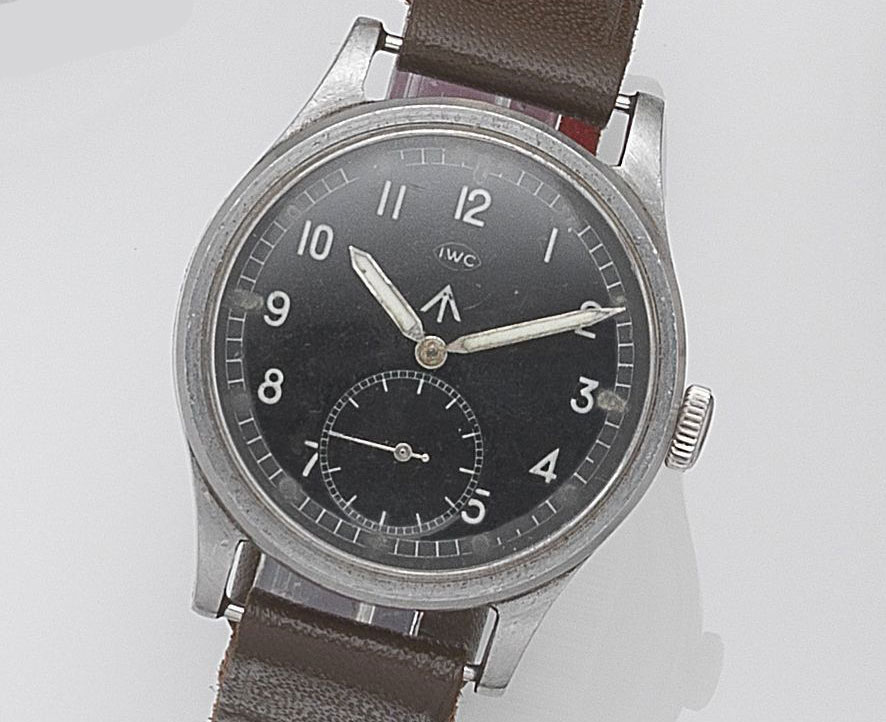
The Record Precision Watch Company was formed in the early 1900’s, and was purchased by Longines in the early 1960’s. As we mentioned earlier, Record W.W.W.’s were constructed in larger numbers than IWC’s. They were a bit bigger as well (36,5 mm instead of 35mm), while both had an 18mm lug size. Another difference was the screw case back of the Record and the fact that it had a chrome top construction in its case while the IWC was Stainless steel. The 15 jewel Cal.022-K provided a Breguet-curved hairspring, a screwed alloy balance (rather than steel), and the bridge supporting the wheel train has been split into three elegant cogs, making this the most elaborate and probably the finest movement Record ever manufactured.
The specific example available for auction has a military replacement dial with a British Store Number (10034 was the number given to Record watch company; Omega had 10033 while IWC had 10028.) Here also we must stress that W.W.W’s were originally issued with either pig skin straps or canvas straps; G10 straps were not available until the 1970’s.
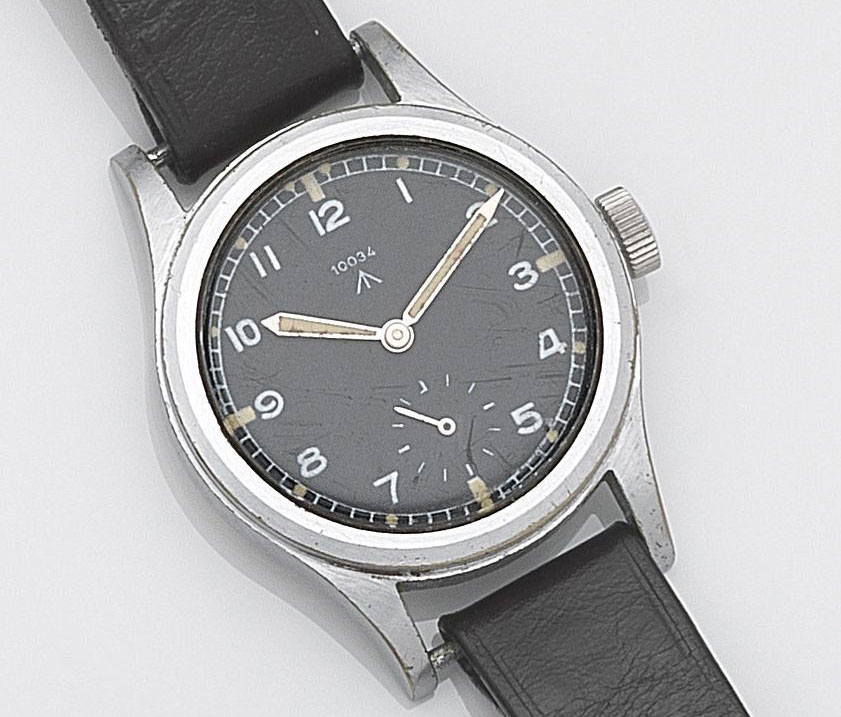
The IWC and the Record W.W.W’s are two of the famous Dirty Dozen British Military timepieces. These watches represent an era when the watch was a lifesaving tool, in peacetime or in war. As such, they were constructed to the strictest specifications and with the best materials available. What makes them quite unique are their charisma and their pedigree, and they will be always cherished by collectors and fans of the military watches for primarily that reason. Despite the technological breakthroughs we have witnessed in the past few decades, the mechanical watch is far from obsolete, even if its role is, anymore, less crucial from a practical/tactical standpoint. The historical significance of time measurement in all great human endeavors is really what makes us simply love these watches.
Sources:
- For more info regarding the W.W.W watches don’t forget to check the exemplary study by Adrian van der Meijden and Thomas Koenig. On His Majesty’s Service Watch, Wrist, Waterproof (W.W.W.) of the British Army -> click here
- Check as well: http://www.time514.com/BritishX.htm
- First collection photo by Ross Baverstock
The three W.W.W. watches to be auction on May 20th, at Bonhams in London




5 responses
Thank you for this interesting and educational post. The second photo is mine of my Dirty Dozen collection, which took a focused 3 and a half years to assemble. I fall into the category of those “who just love the no-frills design and construction of these timepieces -in other words, they are motivated by the aesthetically pure, form follows function raison d’ etre.”
You do have a very impressive collection of W.W.W. watches, Roger!
Hi i have a iwc mk x and wood like to get a value
Hi Glen, these old Mark X models are rare and usually only appear on auction. The best way to get an idea about the price is to search the Antiquorum and Christie’s websites.
Hello mr.F.Geelen, I have a record www watch and I try to sell it. What value is this watch. The clock is in good shape.